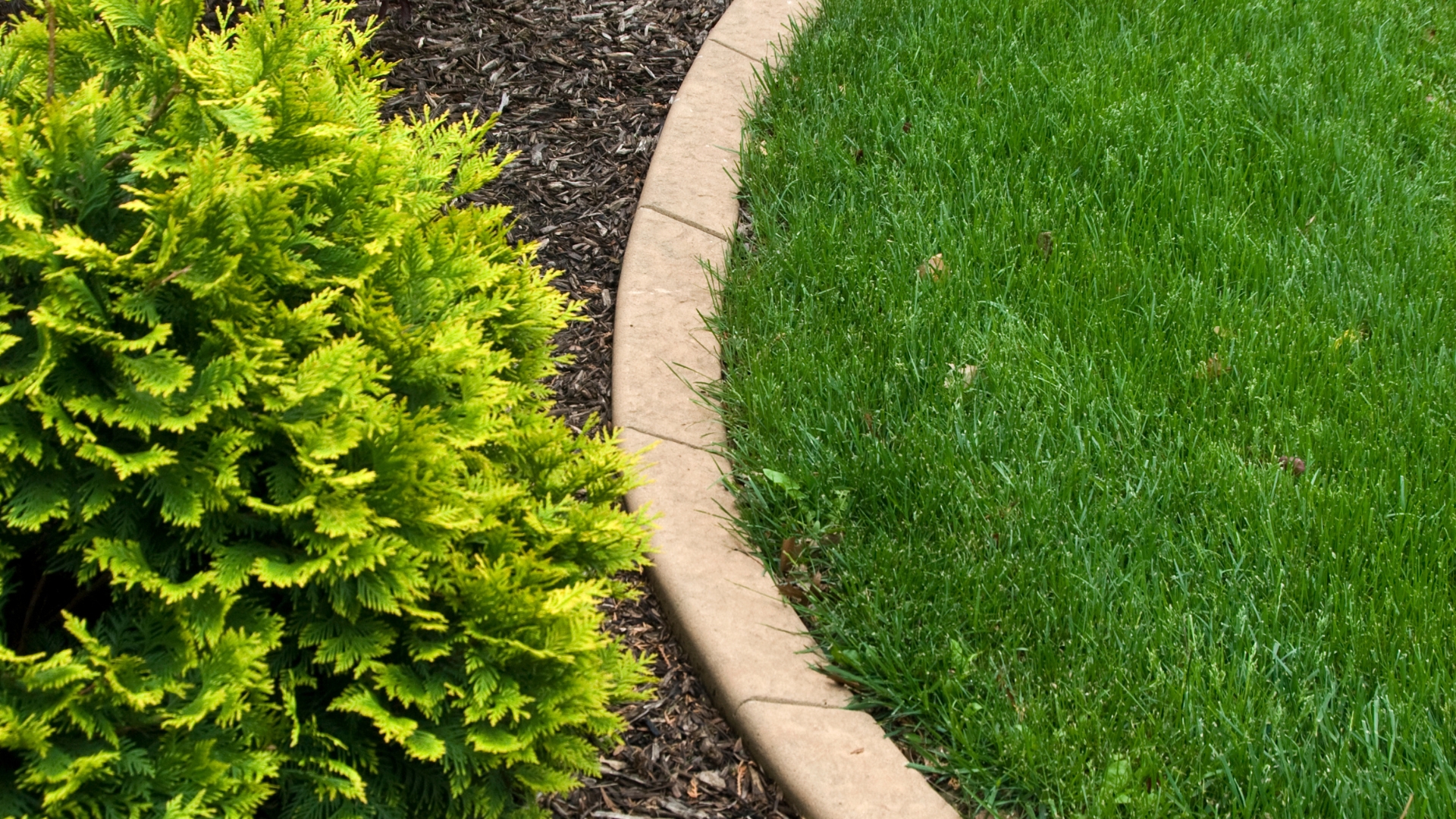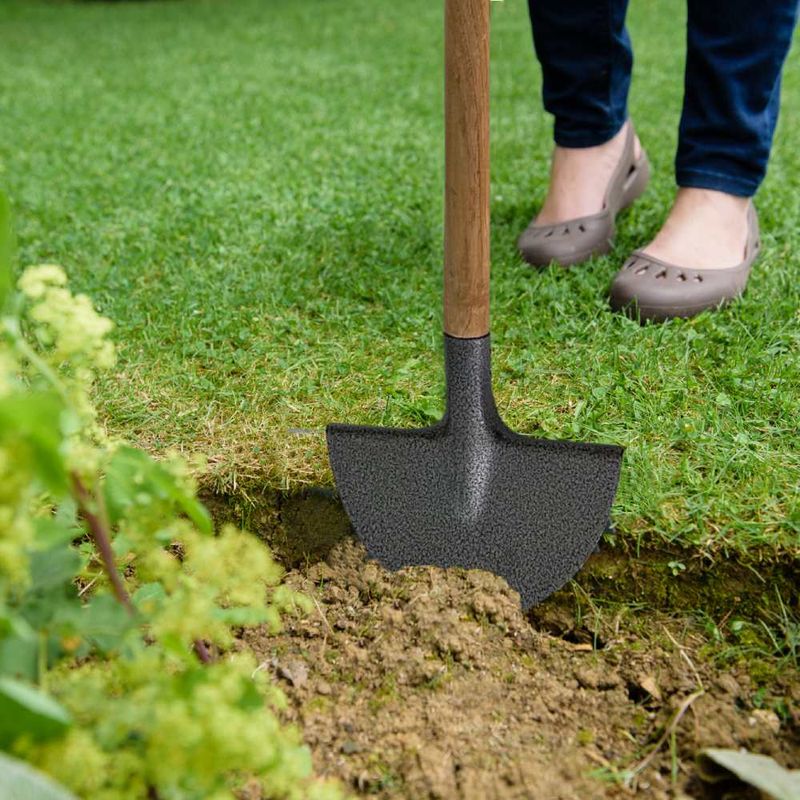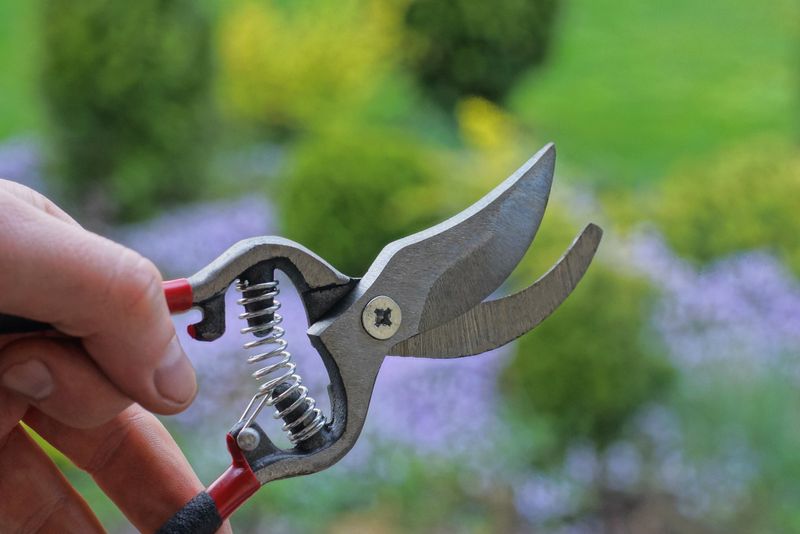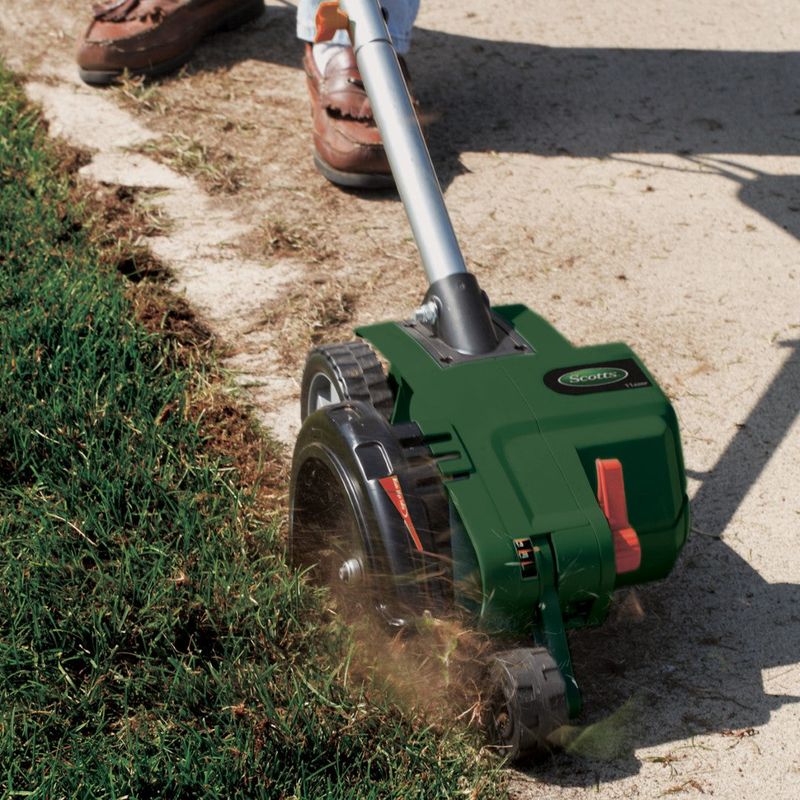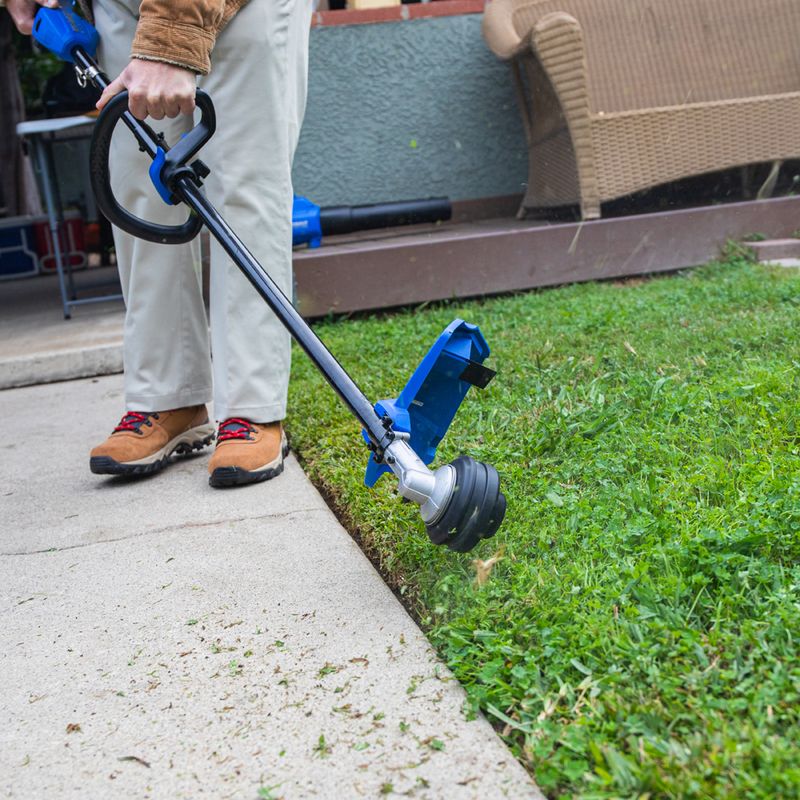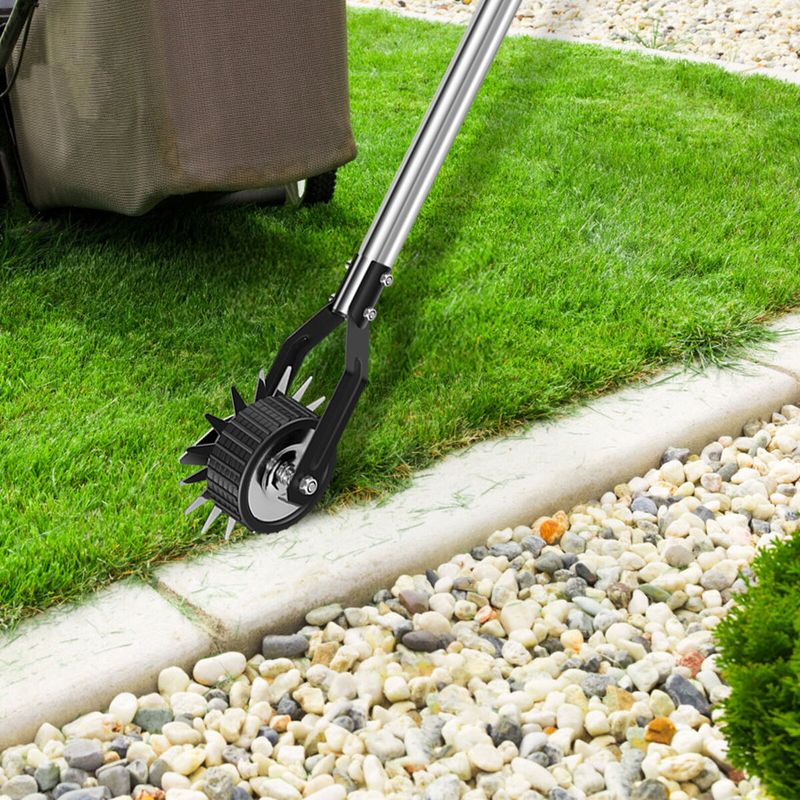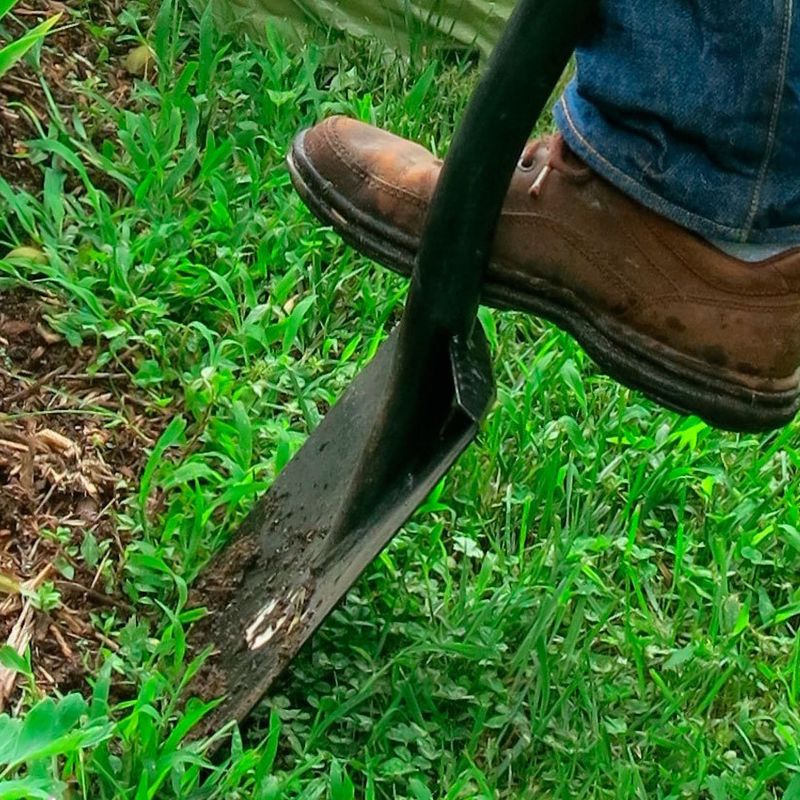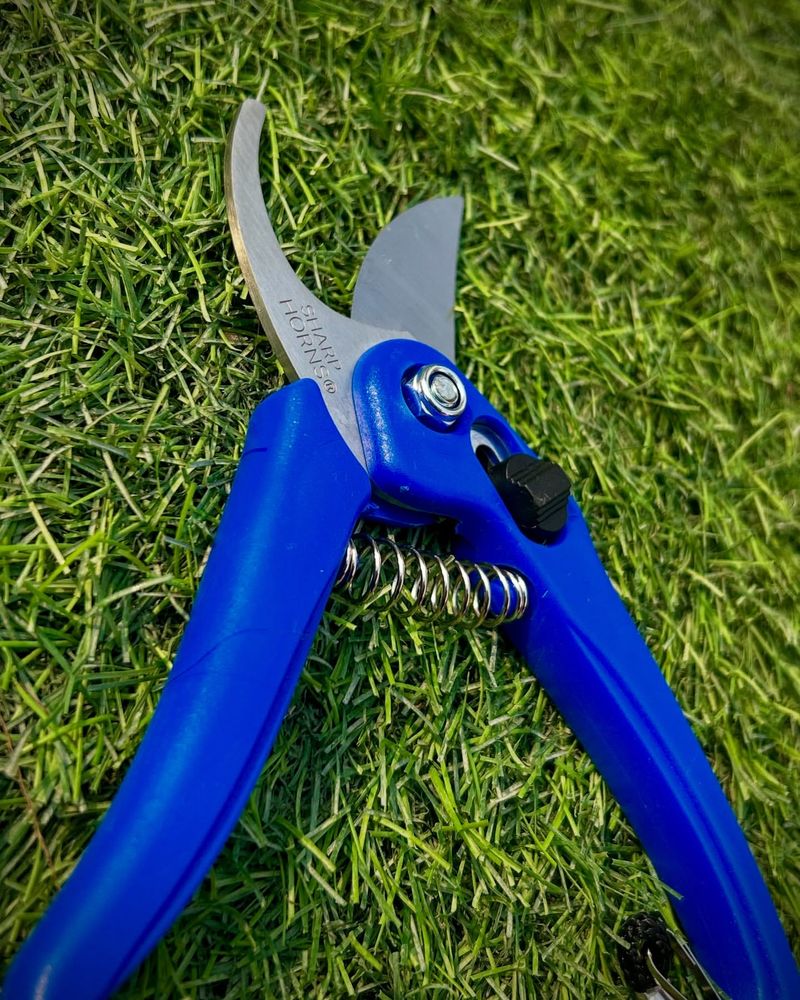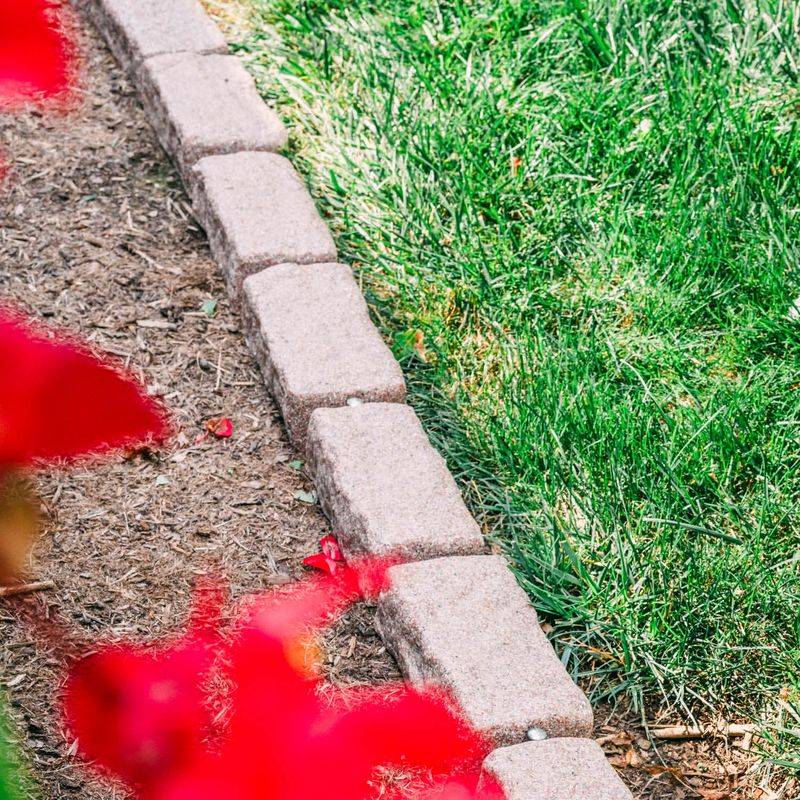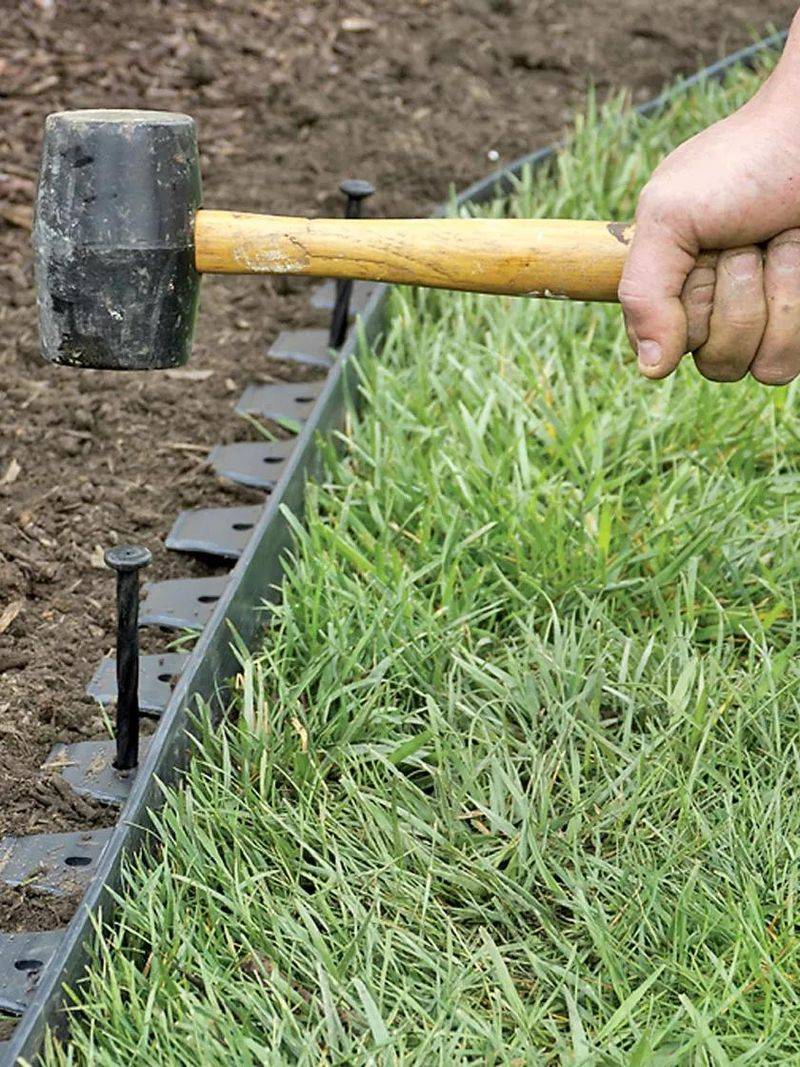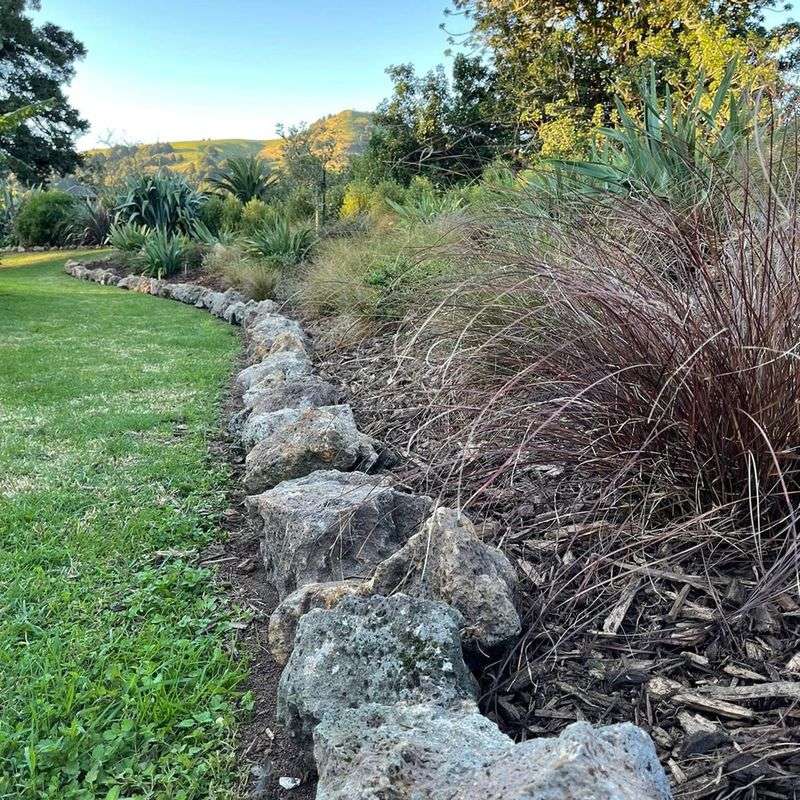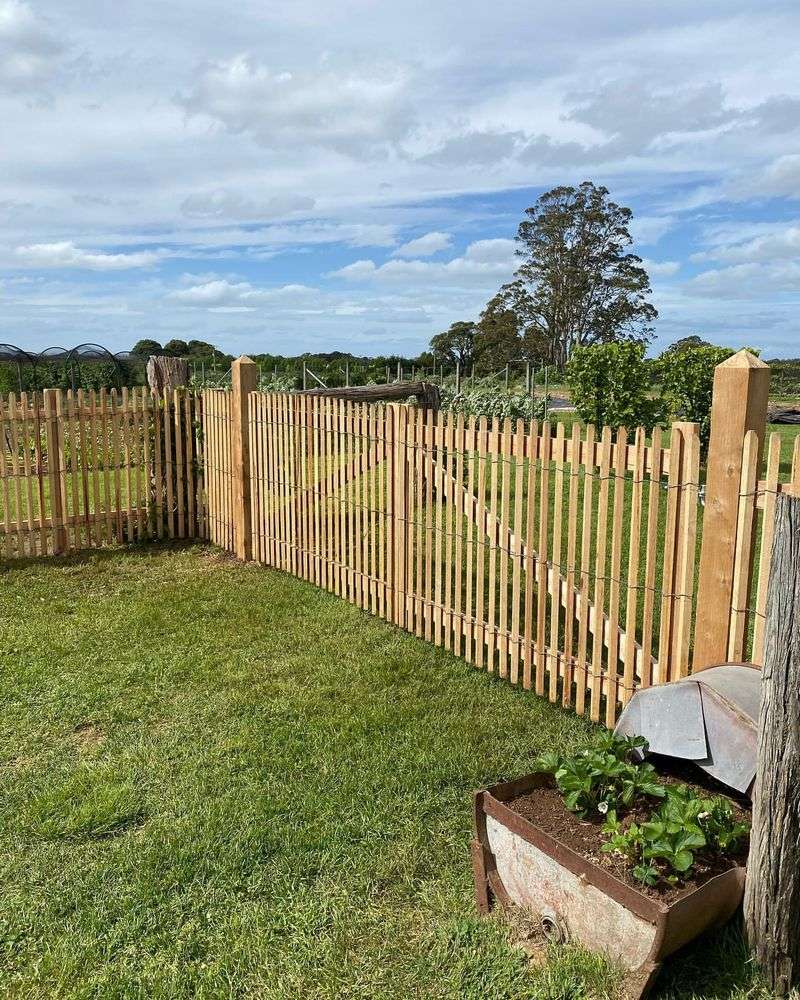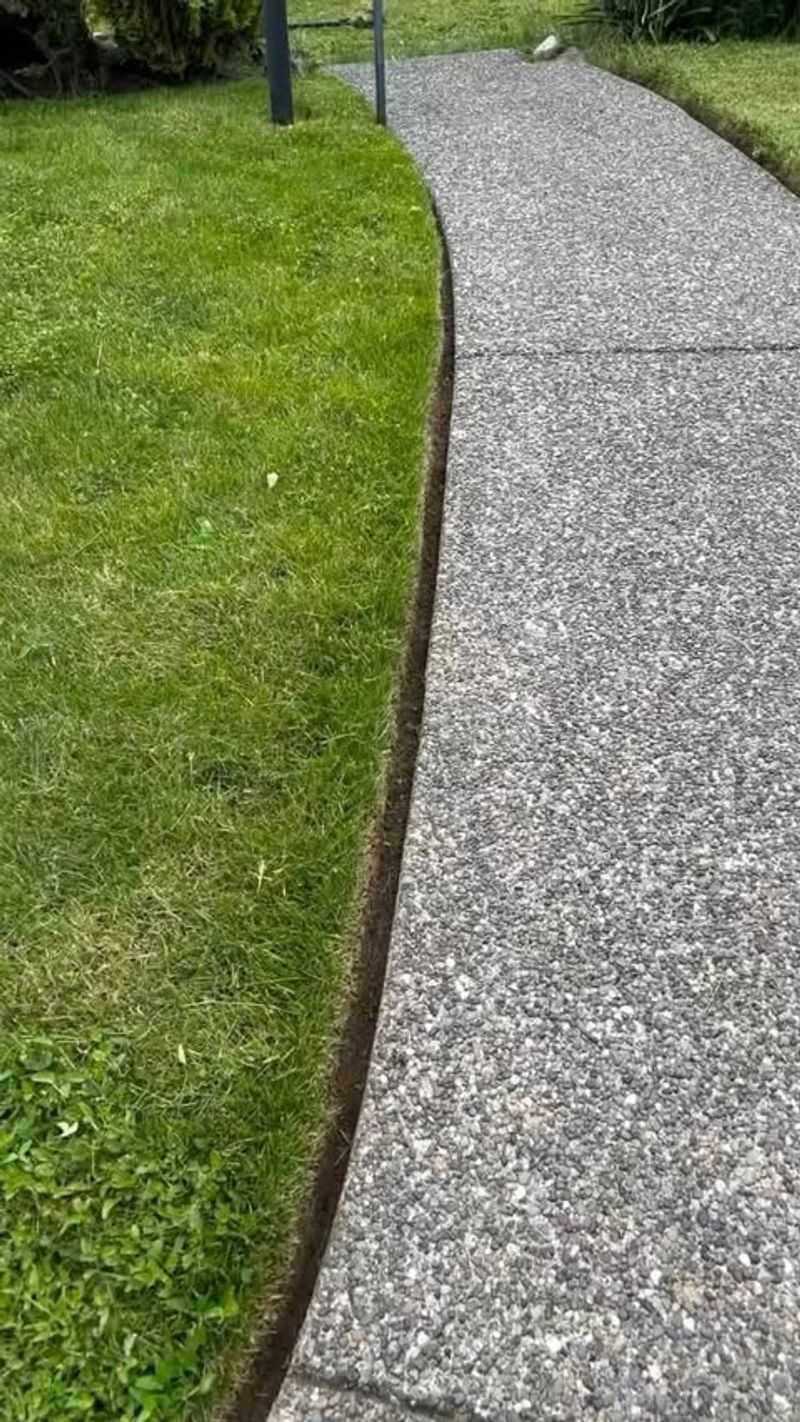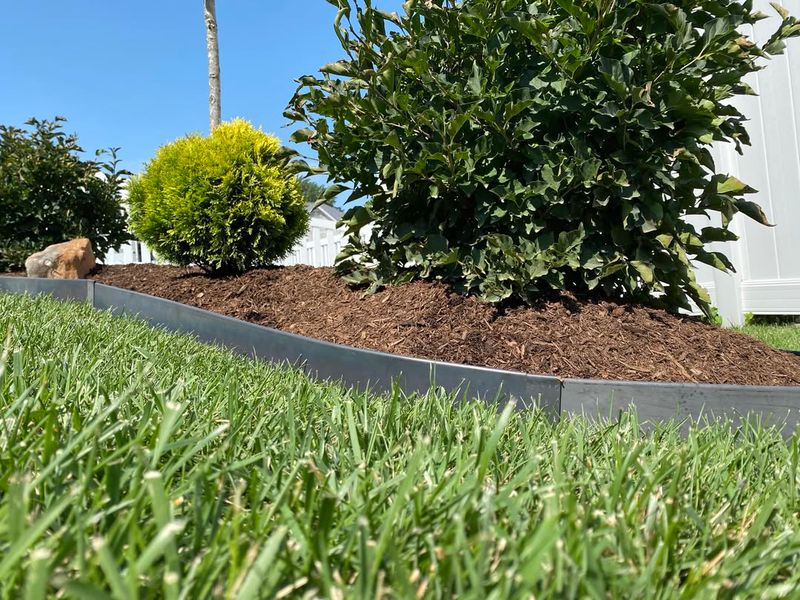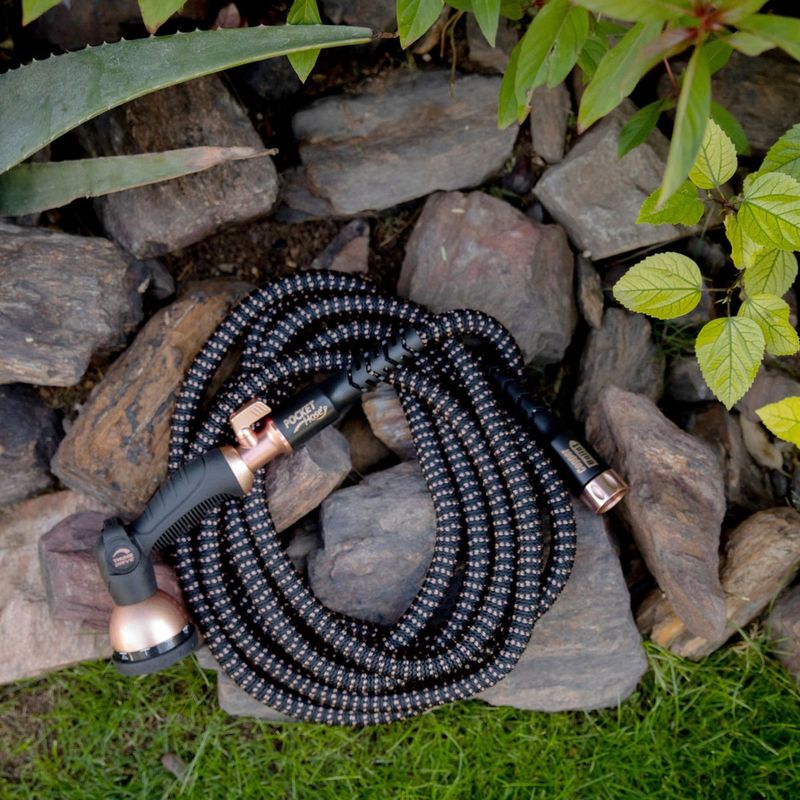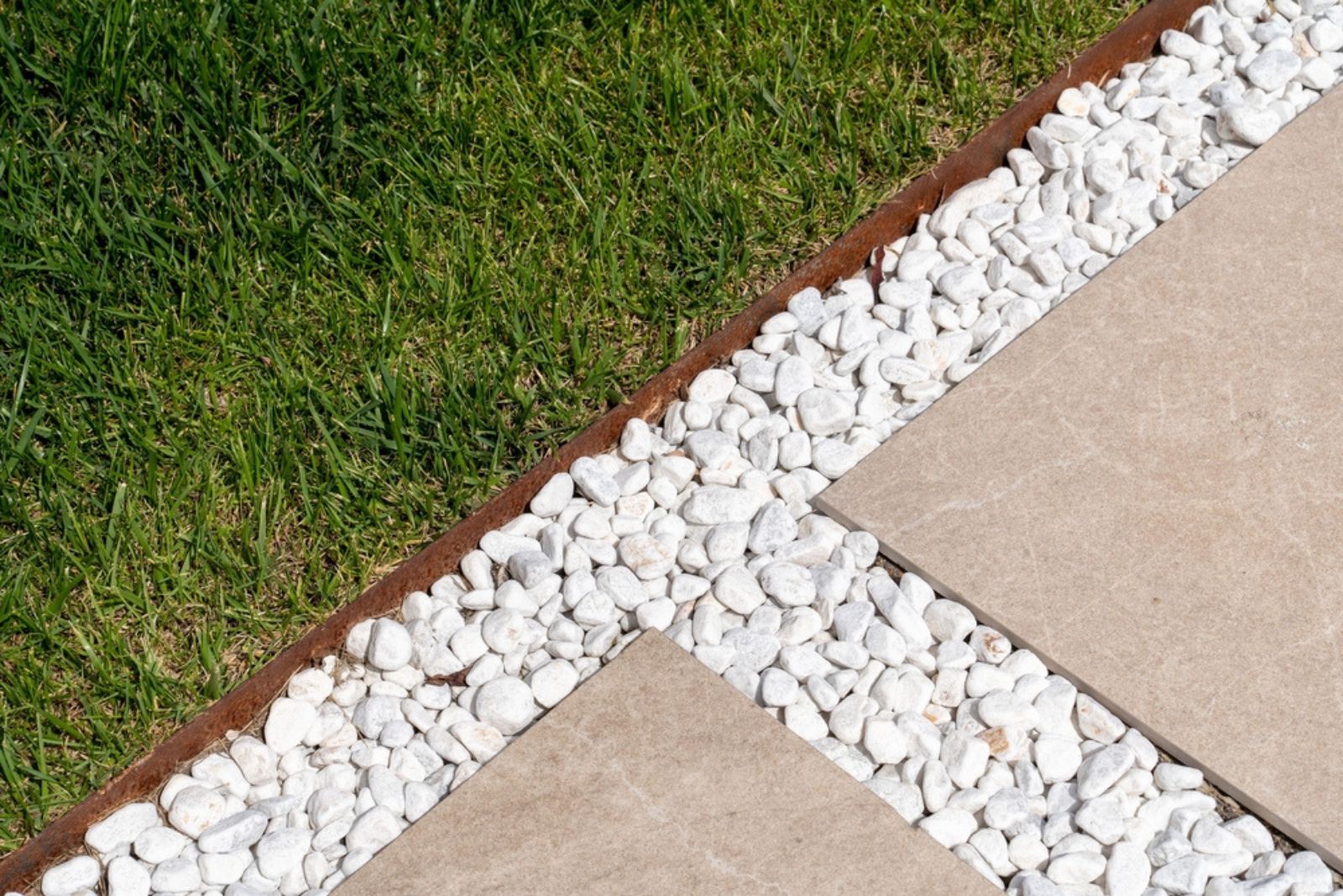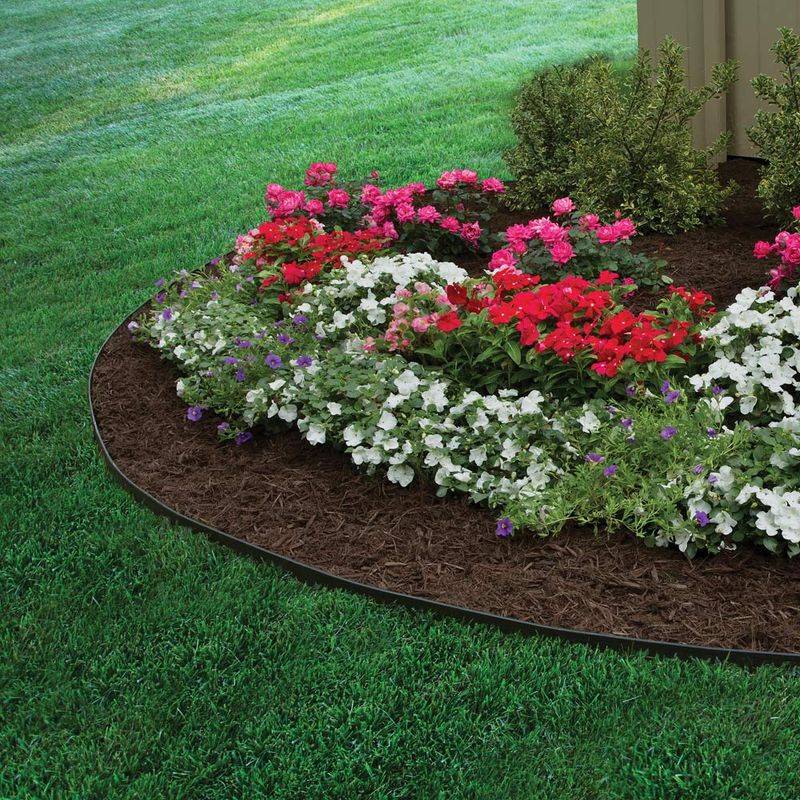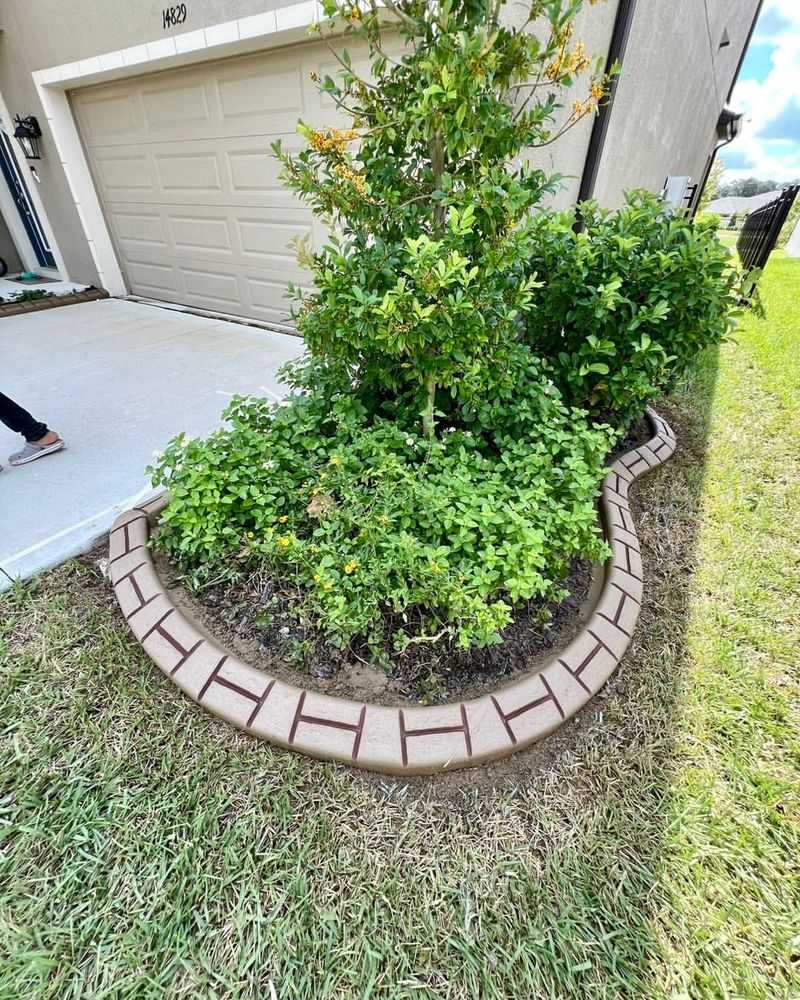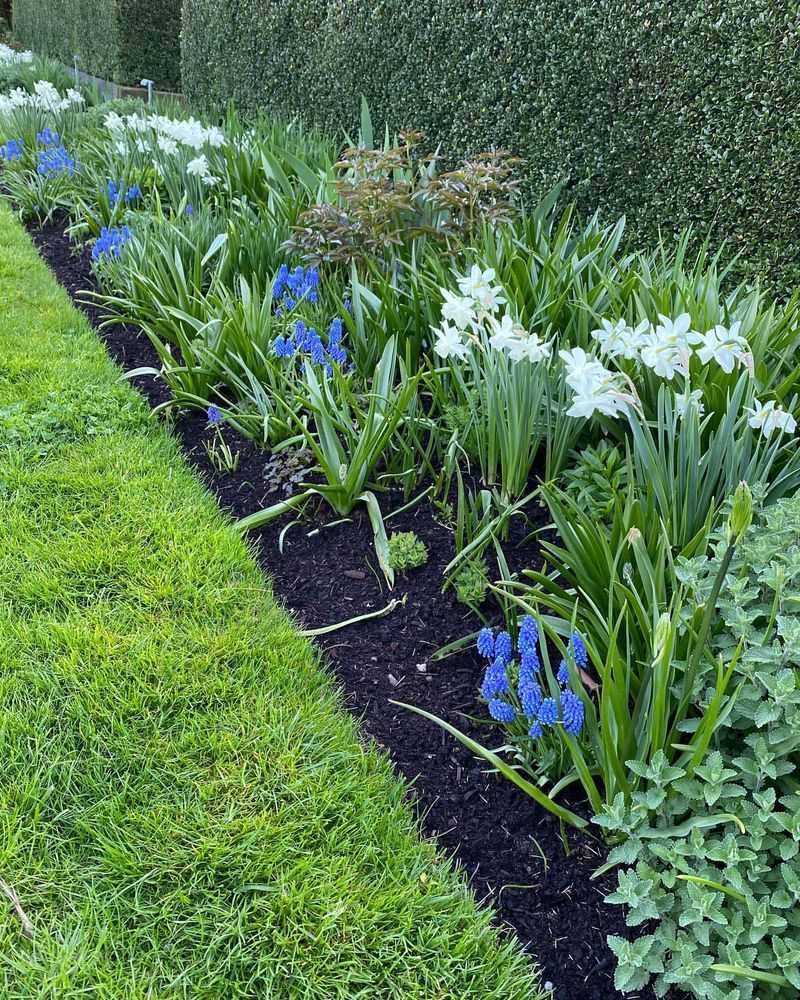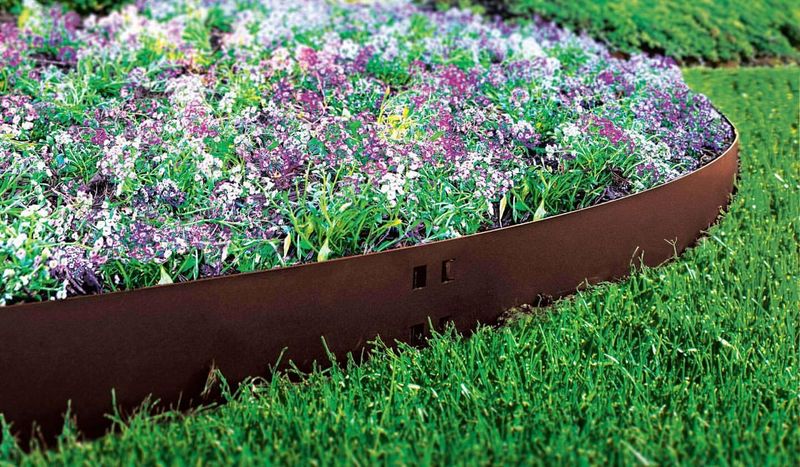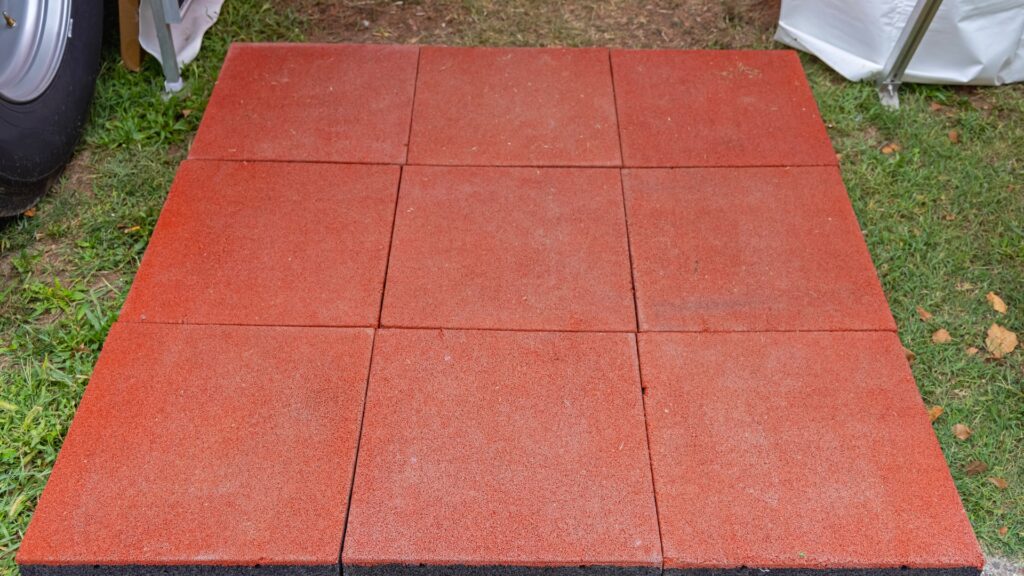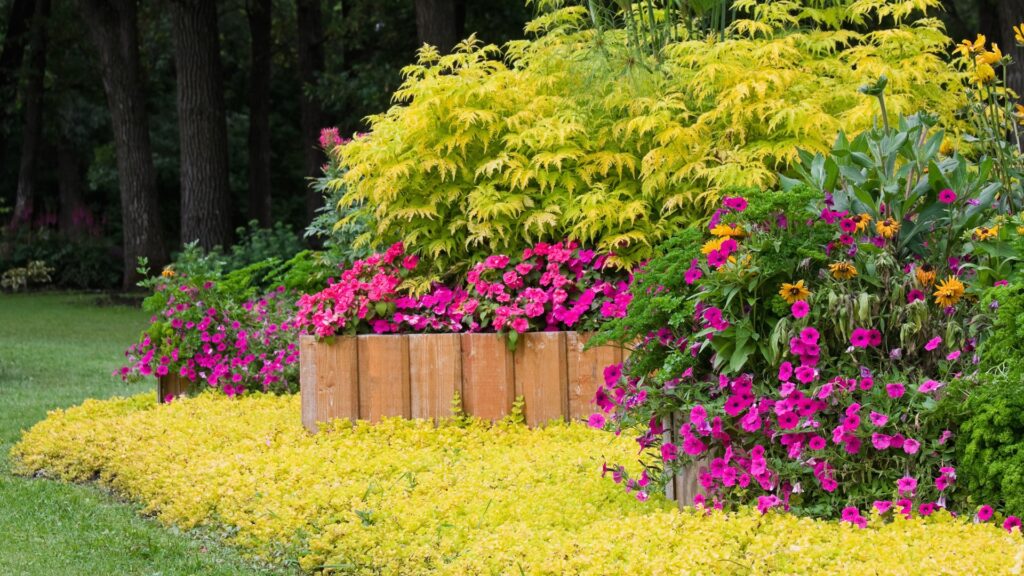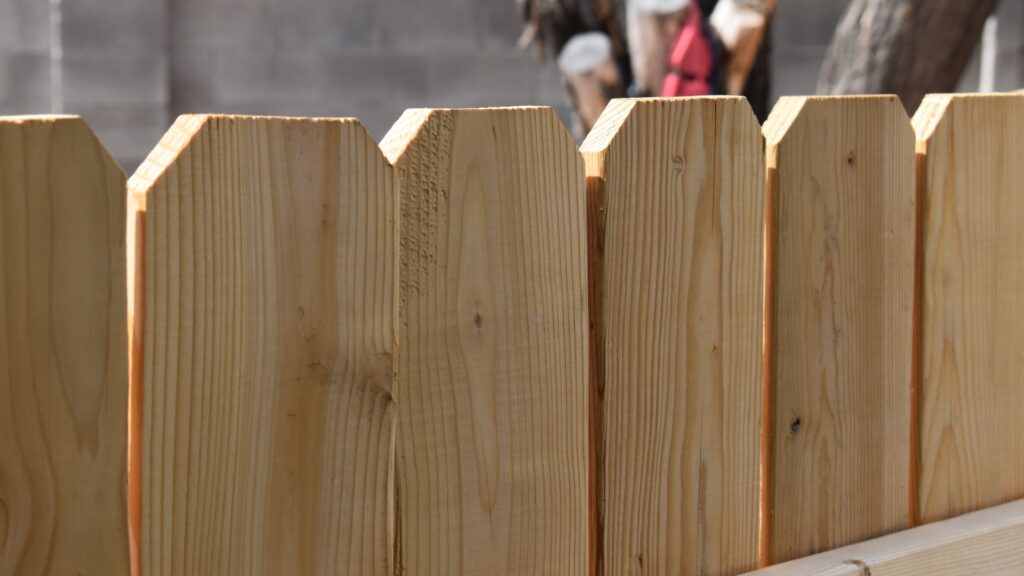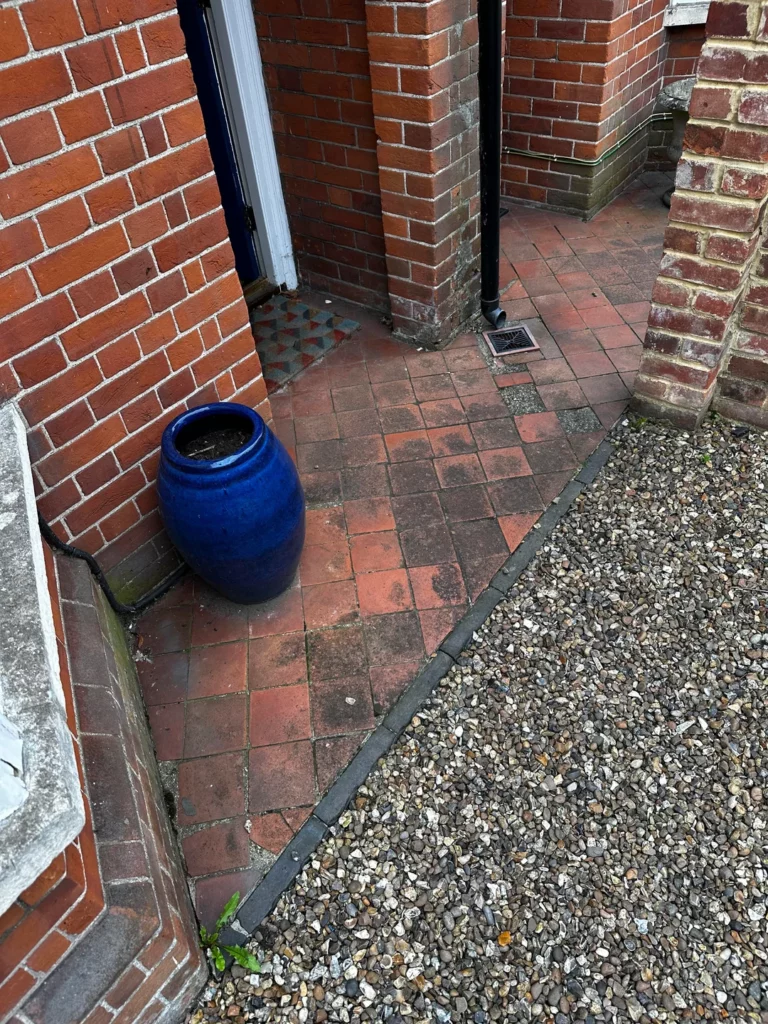Lawn edges might not steal the show, but they sure know how to make everything else pop. You don’t need fancy tools or a pro-level setup to get crisp, clean lines around your grass.
I’ve tried a few of these tricks myself—some with an edger, some just with a spade and a little determination—and the results are totally worth it.
Whether you’re going for polished and sleek or rustic and charming, there’s something here for every yard. Let’s turn that lawn border from “meh” to masterpiece!
1. Handheld Spade Edging
For a precise and traditional approach, using a handheld spade can provide excellent results. This method allows for detailed control, ensuring crisp and clean lines along the lawn’s edge. Start by marking your boundary with a string or hose for guidance.
Carefully drive the spade into the soil, creating a defined separation between the grass and adjacent areas. Regular practice will enhance your technique, making the process quicker and more efficient over time.
2. Garden Shears Technique
Garden shears offer a simple yet effective way to maintain lawn edges. They ensure a neat appearance by allowing close trimming of overhanging grass blades.
Begin trimming along the desired edge, following the lawn’s natural contours. Use consistent snipping motions for an even finish. Regular maintenance with this method will keep your lawn edges sharp and tidy throughout the growing season.
3. Electric Edger Mastery
Electric edgers provide power and efficiency, making lawn edging a breeze. They are ideal for larger areas where manual methods may be too labor-intensive.
Before starting, make sure the edger is fully charged or plugged in. Glide the tool along the edge, allowing its motorized blade to cut through overgrowth. Routine use will keep your lawn looking immaculate with minimal effort.
4. String Trimmer Edge
Using a string trimmer is an excellent way to maintain lawn edges with precision. It’s versatile and can be adjusted for different heights and angles.
Guide the trimmer along the edge, ensuring it remains level for a uniform cut. This tool is particularly useful for edging irregular shapes or curves, making it a valuable addition to your gardening toolkit.
5. Manual Rotary Edger
For those who enjoy a more hands-on approach, a manual rotary edger can deliver satisfying results. This tool features rotating blades that cut through grass and soil. Push the edger along the path, using your body weight to encourage movement.
It’s perfect for smaller lawns or areas where precision is key. The manual effort involved provides a rewarding sense of accomplishment.
6. Shovel Edge Definition
A shovel is a versatile tool for lawn edging, allowing for deep and clean cuts. By digging along the desired line, you can create a pronounced separation between the lawn and garden beds.
Mark your path before starting to ensure a straight edge. This method is particularly beneficial for creating new garden plots or redefining existing borders.
7. Scissors for Small Areas
For meticulous gardeners, using scissors can be an enjoyable way to edge small lawn areas. This method offers ultimate control, perfect for trimming delicate spots or correcting minor imperfections.
Carefully snip along the edge, taking time to ensure uniformity. While time-consuming, the precision achieved is unparalleled, making it well worth the effort for perfectionists.
8. Bricks as a Border
Bricks provide a stylish and permanent solution for lawn edging. They create a clear distinction between grass and garden areas, adding a touch of elegance.
Lay bricks end-to-end along the desired border. Ensure they are level and firmly placed to prevent shifting. This method not only defines the edge but also minimizes maintenance by preventing grass encroachment.
9. Plastic and Metal Edging Strips
For a durable and flexible edging solution, consider plastic or metal strips. These materials are easy to install and can contour to any shape, making them ideal for creative garden designs.
Insert the strips into the ground along the desired line, securing them firmly in place. This method offers long-lasting results and can be combined with other border features for added visual interest.
10. Natural Stone Borders
Natural stones provide a rustic and picturesque lawn edge, blending seamlessly with the landscape. Their varied shapes and colors add personality to garden borders. Arrange stones along the edge, overlapping slightly for stability.
This method requires minimal maintenance while enhancing the garden’s natural beauty. It’s perfect for those who appreciate a more organic aesthetic.
11. Wattle Fencing Border
Wattle fencing offers a charming and eco-friendly way to edge a lawn. Made from woven branches, it creates a rustic barrier that complements natural garden settings. Position the fencing along the desired edge, securing it into the ground with stakes.
This method is sustainable and adds a quaint touch to garden landscapes, making it popular among environmentally-conscious gardeners.
12. Gravel Pathway Edges
Gravel pathways provide a clear and low-maintenance lawn edge. They offer excellent drainage and contrast beautifully with greenery.
Lay gravel along the desired path, ensuring a clear distinction between the lawn and pathway. This method is ideal for creating defined walking areas and adds a modern touch to garden design.
13. Mulch Borders for Gardens
Mulch serves as an effective and natural lawn edging material. It suppresses weed growth and retains soil moisture, benefiting adjacent plants. Spread mulch along the garden’s edge, creating a buffer that separates grass from flowerbeds.
This method enhances soil health while providing a neat appearance, making it a popular choice for gardeners seeking both form and function.
14. Hose or Rope Guidelines
Using a hose or rope as a guide is a great way to plan and visualize lawn edges. It helps create straight or curved lines before committing to permanent edging.
Lay the hose along the desired path, adjusting as necessary to achieve the perfect outline. This method is useful for experimenting with new garden layouts without immediate commitment.
15. Decorative Edging Stones
Decorative stones offer a creative and artistic option for defining lawn edges. They come in various shapes and colors, allowing for personalized garden aesthetics. Arrange stones along the edge, experimenting with different patterns for visual interest.
This method not only enhances the garden’s appearance but also serves as a functional barrier against grass encroachment.
16. Wooden Log Borders
Wooden logs provide a natural and rustic lawn edge, perfect for cottage-style gardens. They offer a sturdy barrier that blends seamlessly with the environment.
Position logs along the edge, ensuring they are secure and level. This method adds a warm and earthy touch to garden borders, appealing to those who favor a back-to-nature aesthetic.
17. Lawn Edging Tape
Lawn edging tape is a quick and easy solution for creating defined edges. It’s adhesive and can be applied directly to the ground, offering immediate results.
Place the tape along the desired path, pressing firmly to ensure it adheres. This method is perfect for temporary solutions or for those who wish to experiment with different garden layouts.
18. Concrete Curbing
Concrete curbing provides a sleek and permanent solution for lawn edging. It offers durability and a modern aesthetic that suits contemporary garden designs.
Pour concrete into molds along the desired edge, allowing it to set for a seamless finish. This method requires professional installation but results in a long-lasting and visually appealing border.
19. Living Plant Borders
Living plant borders offer a dynamic and eco-friendly edging solution. Plants like low-growing shrubs create a natural barrier that evolves with the seasons.
Plant shrubs along the desired edge, spacing them evenly for a consistent look. This method enhances biodiversity and adds a vibrant touch to garden borders, appealing to nature enthusiasts.
20. Steel Edging Solutions
Steel edging offers a sleek and durable option for defining lawn borders. It provides clean lines and a contemporary aesthetic that complements modern garden designs.
Install steel strips along the desired edge, securing them firmly into position. This method ensures long-lasting results and requires minimal maintenance, making it ideal for busy gardeners.
21. Recycled Rubber Edging
Recycled rubber edging is an eco-conscious and durable way to define your lawn borders. Made from repurposed tires, it mimics the appearance of natural materials while offering flexibility and resilience.
Install the edging by positioning it along the desired boundary and securing it with landscape spikes. Its pliability allows it to curve naturally around garden beds, and it withstands extreme weather conditions, making it a sustainable and low-maintenance choice.
22. Edging with Raised Planters
Raised planters can double as stylish lawn edging, creating both visual appeal and functional planting space. They form a distinct boundary while allowing for the cultivation of herbs, flowers, or vegetables.
Place the planters strategically along the lawn’s edge, ensuring they are level and spaced appropriately. This method adds vertical interest and maximizes small garden spaces, making it ideal for urban or compact landscapes.
23. Edging with Reclaimed Wood Planks
Reclaimed wood planks offer a sustainable and rustic approach to lawn edging. Sourced from old pallets or fencing, these planks provide a charming and weathered look that suits cottage or natural-style gardens.
Cut the wood to uniform lengths and place them vertically or horizontally along the lawn edge, securing them in place with garden stakes if needed. This method not only reduces waste but also creates a distinctive border with plenty of character. With a bit of creativity, you can arrange the planks in patterns or staggered heights for added visual interest.
24. Edging with Terracotta Tiles
Terracotta tiles bring a warm, Mediterranean flair to lawn borders while offering a durable and attractive edging solution. Their earthy tones and classic shapes blend beautifully with both rustic and contemporary gardens.
Lay the tiles along the desired boundary, either flat or upright depending on your preferred look. Be sure to embed them slightly into the soil for stability. This method not only defines edges clearly but also enhances the overall aesthetic of the garden with its timeless charm.

